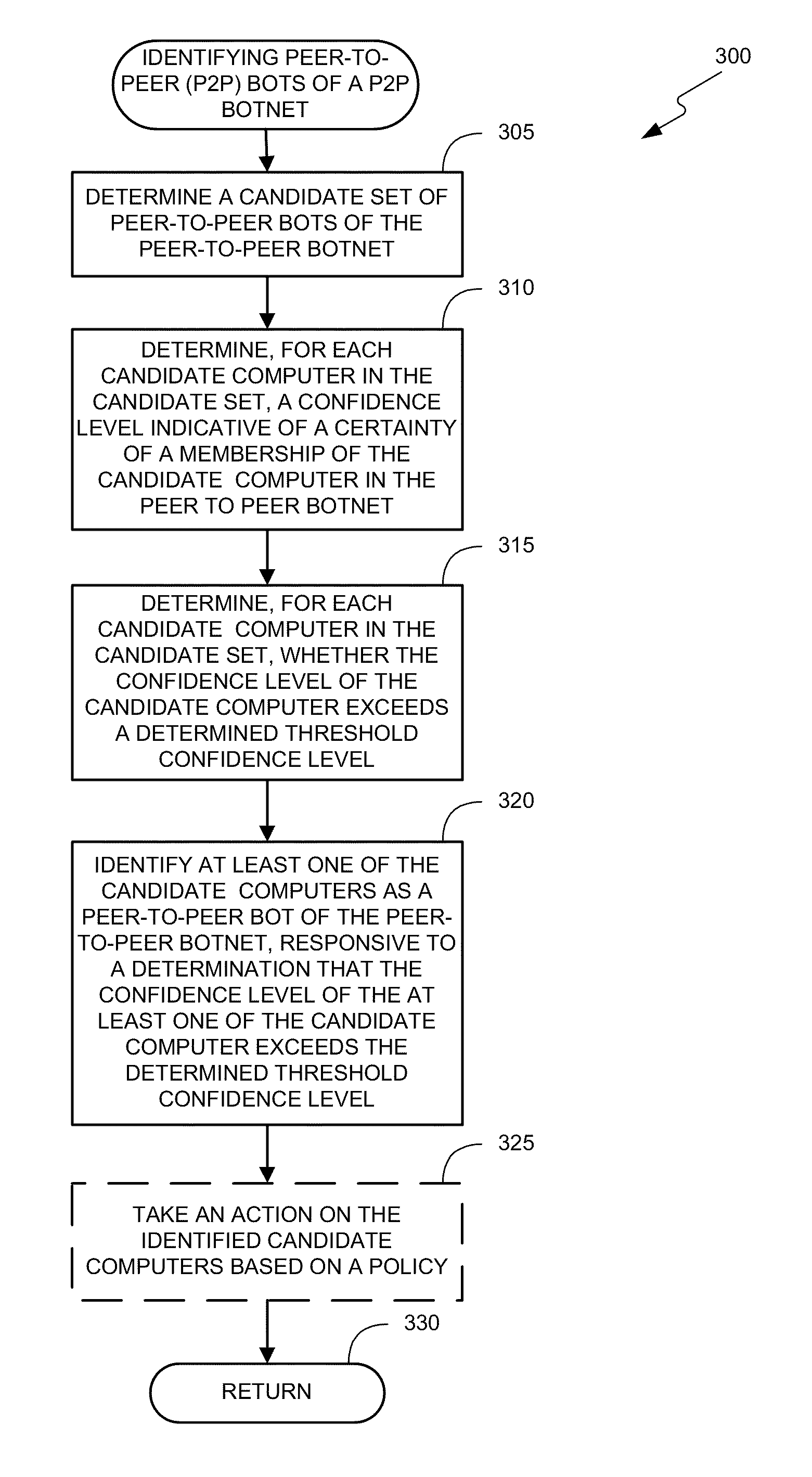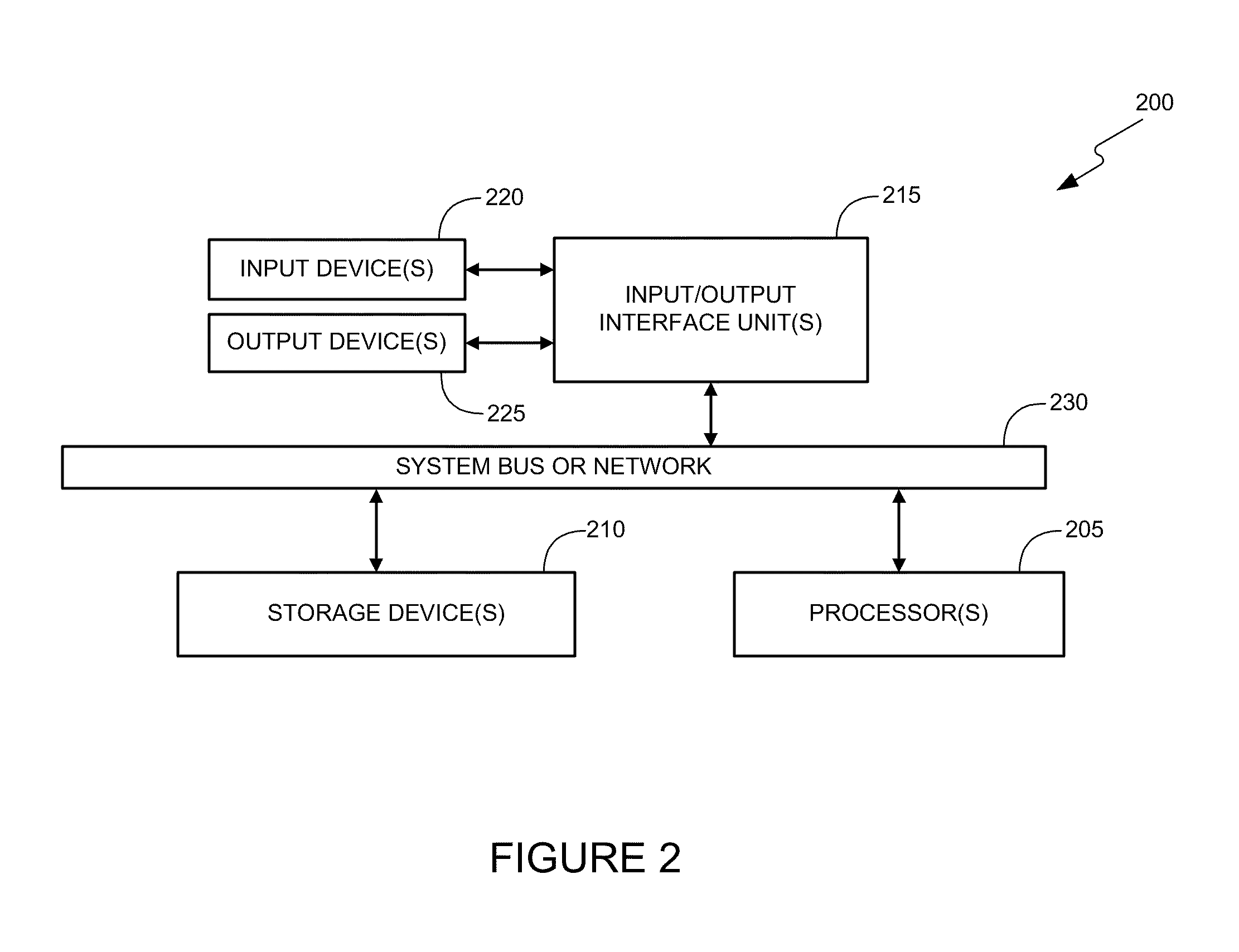Method and apparatus for identifying members of a peer-to-peer botnet
- Summary
- Abstract
- Description
- Claims
- Application Information
AI Technical Summary
Benefits of technology
Problems solved by technology
Method used
Image
Examples
Embodiment Construction
threshold values, in an exemplary simulated system consistent with the present invention.
[0037]FIG. 21 illustrates the average recall values for different number of Nugache peers and different threshold values, in an exemplary simulated system consistent with the present invention.
[0038]FIG. 22 illustrates a graph of number of Nugache peers and a total number of hosts, in an exemplary simulated system consistent with the present invention.
[0039]FIG. 23 illustrates recall values versus number of Nugache peers for different privacy threshold values, in an exemplary simulated system consistent with the present invention.
[0040]FIG. 24 illustrates precision values versus number of Nugache peers for different node degree sensitivity coefficient values, in an exemplary simulated system consistent with the present invention.
[0041]FIG. 25 illustrates recall values versus number of Nugache peers for different node degree sensitivity coefficient values, in an exemplary simulated system consist...
PUM
 Login to View More
Login to View More Abstract
Description
Claims
Application Information
 Login to View More
Login to View More - R&D
- Intellectual Property
- Life Sciences
- Materials
- Tech Scout
- Unparalleled Data Quality
- Higher Quality Content
- 60% Fewer Hallucinations
Browse by: Latest US Patents, China's latest patents, Technical Efficacy Thesaurus, Application Domain, Technology Topic, Popular Technical Reports.
© 2025 PatSnap. All rights reserved.Legal|Privacy policy|Modern Slavery Act Transparency Statement|Sitemap|About US| Contact US: help@patsnap.com



